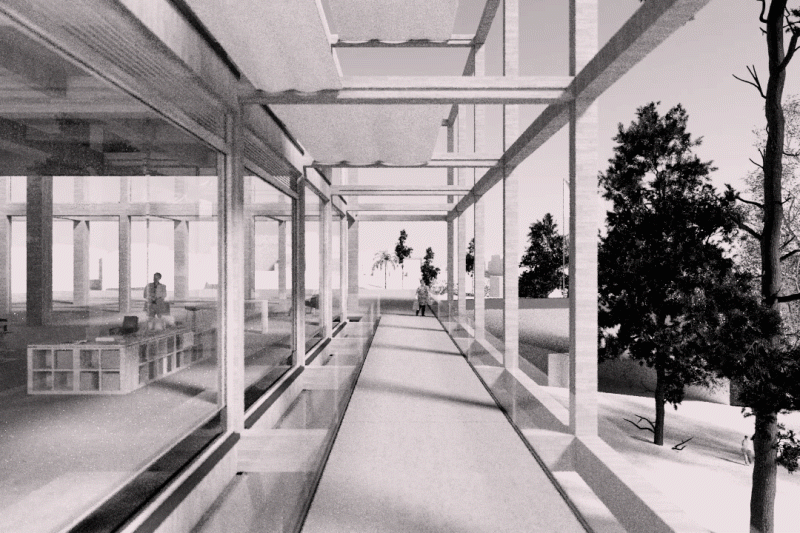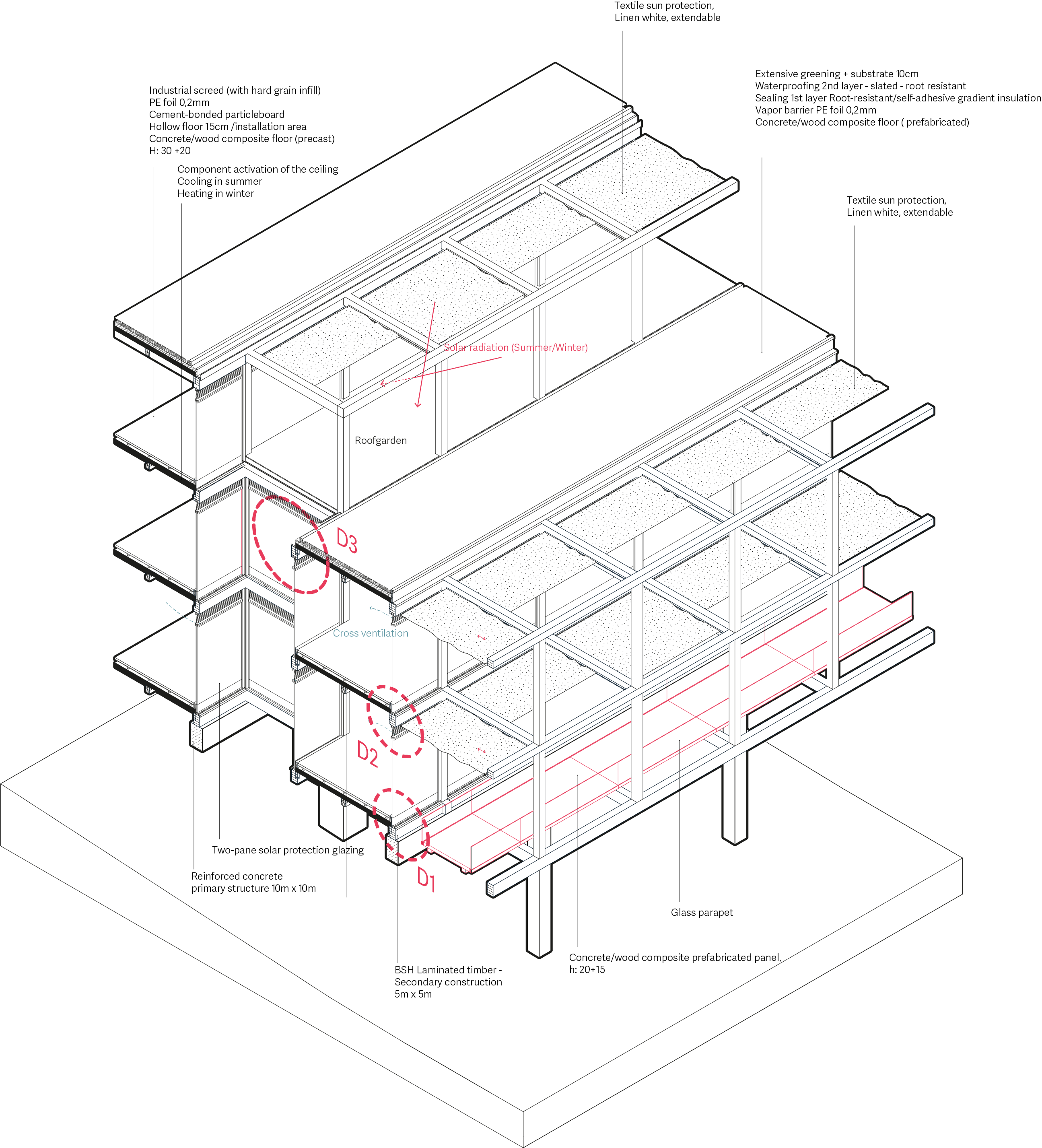Materiality
Concrete
Reinforced concrete is unquestionably the dominant construction material in the Middle East conflict. Whether it is watchtowers, barrier blocks or the 8-meter high wall that separates large parts of the West Bank from Israel. Concrete is the unvarnished truth that conflicts bear. Uncovered concrete elements symbolize pragmatism, honesty, as well as durability and stability.
Pines
Using timber as building material for a parliament in a pacified Middle East has two crucial connotations. In the scenario of an enlightened society in the Middle East this work proposes to use precisely those trees and woods that still cover the ruins of destroyed Palestinian villages today. In addition to the political significance that wood has for this design, it is also the social and ecological aspect that speaks for the choice of this material. Wood stands for naturalness and honesty. Two characteristics that should correspond to a building of democracy.
Glass
Glass as a transparent, hard and precious material, embodies essential attributes that are symbolic for everyday political life. Even on a closer examination of glass, a clear physical and phenomenological description becomes difficult. The possibility of creating a closed physical space while maintaining visual openness makes glass particularly valuable. The preciousness of glass is also reflected in its sensitivity. The irretrievability and the visual as well as acoustic effects that destruction of glass entails lead to respectful distancing.
Linen
The building material wood is supplemented with a movable linen sun protection system to protect the bright, sun-flooded spaces from direct sunlight. The material heaviness of exposed concrete elements as well as laminated timber construction is complemented by the lightness of linen. The textile surfaces produced on the loom are created from crossing threads. The unique accordioning of the fibers characterizes the individual properties of the textile. In a democracy, heterogeneous social structures are created by crossing and weaving different identities, with a special focus on common interests. The fabrics made from spinnable fibers are thus symbolic of social and political processes in a society.

